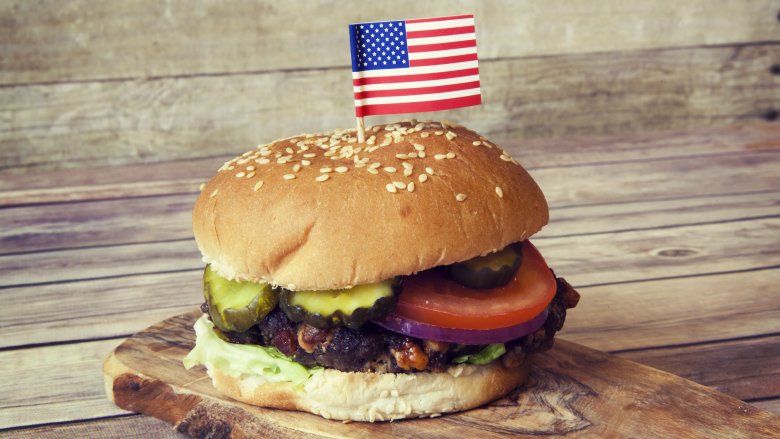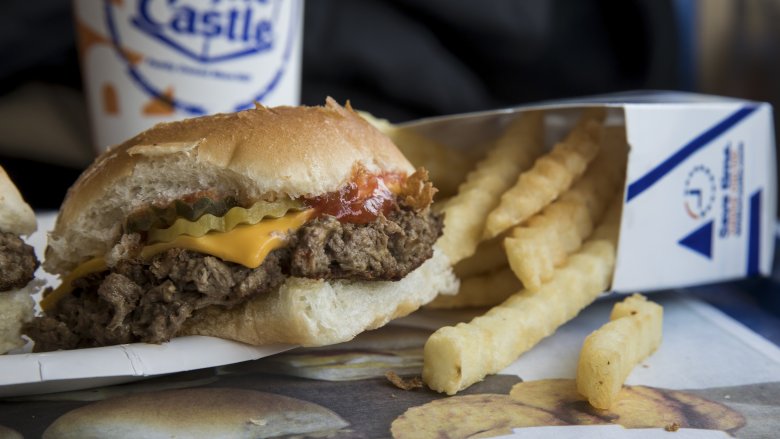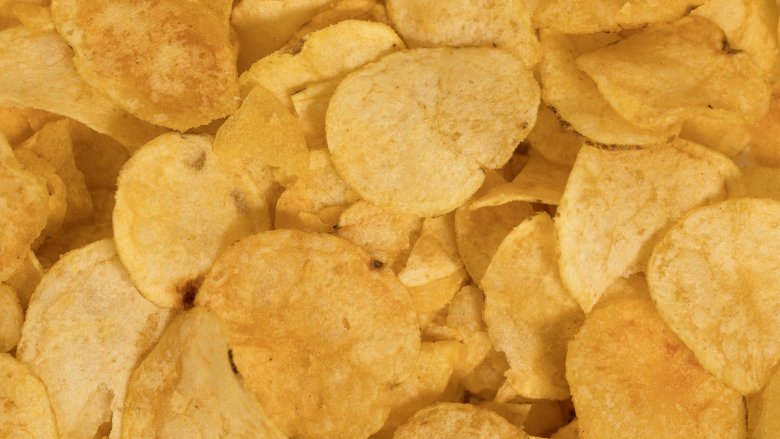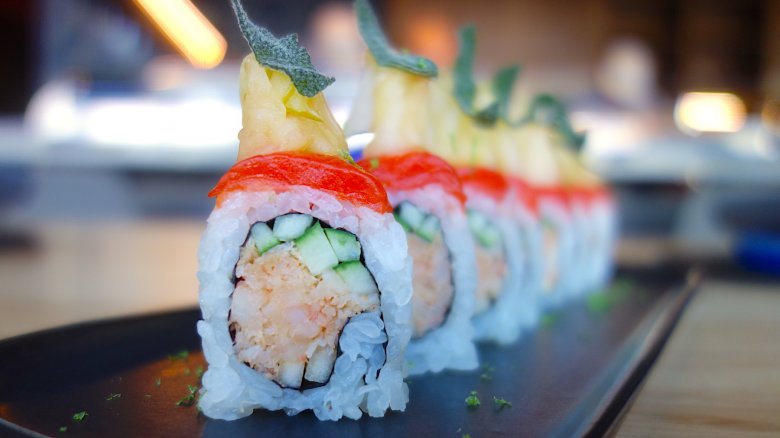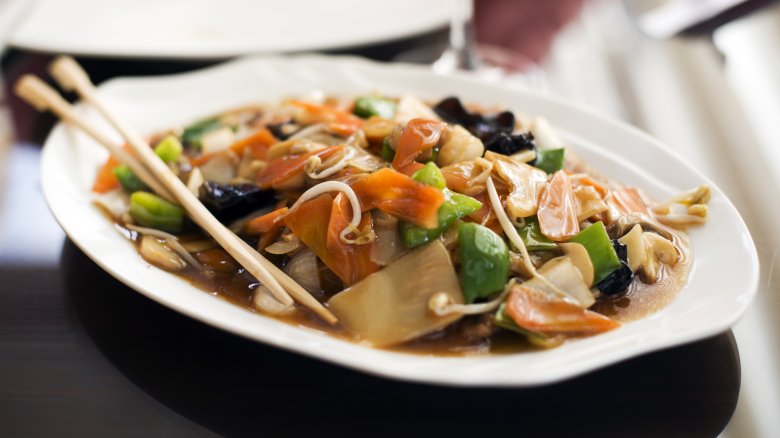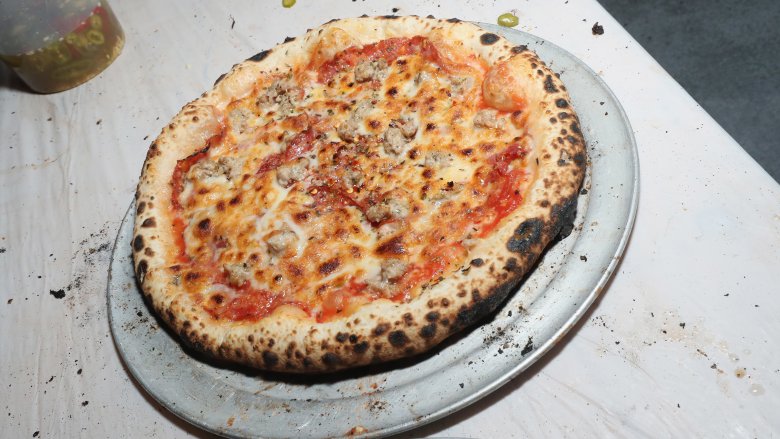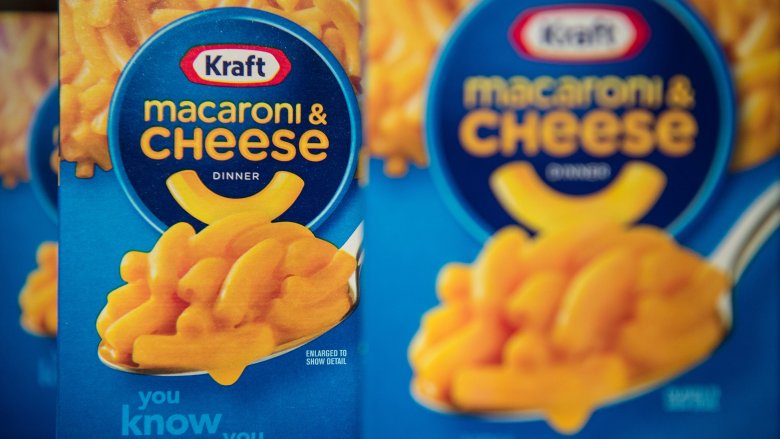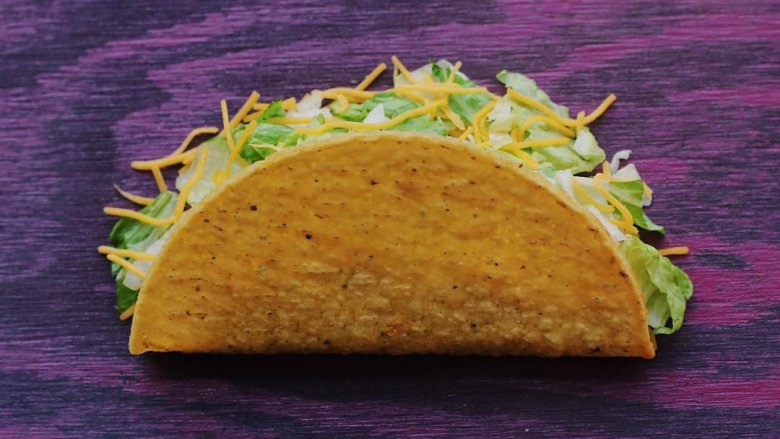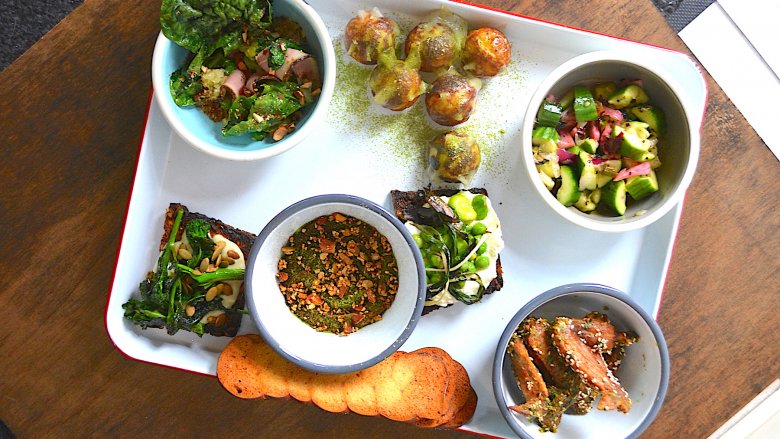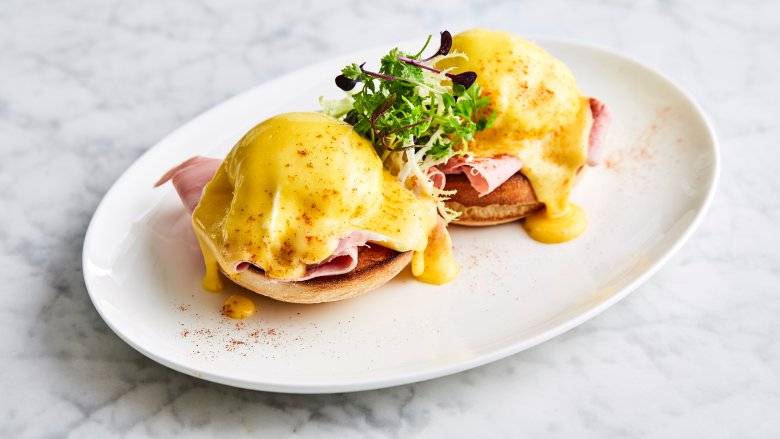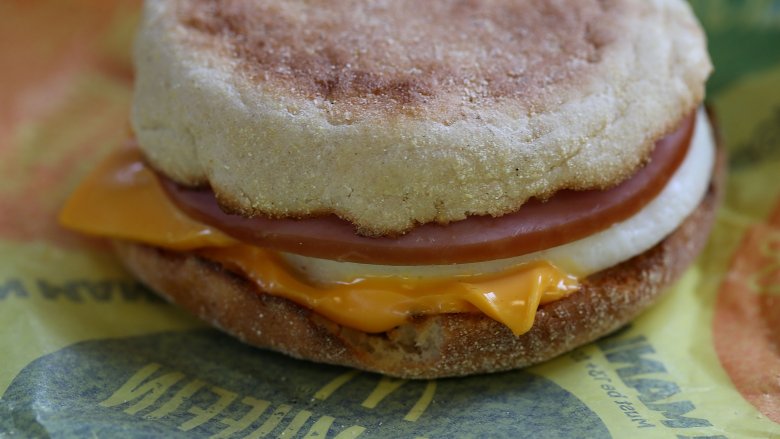Dishes That Changed America Forever
What is American food? If you wanted to get technical about it, you could argue that it consists of bison, salmon, beans, corn, squash, and any other native flora and fauna that indigenous tribes cultivated and hunted precontact. Conversely, if you wanted to get sentimental about it, you could point to all those symbols of the good old red, white, and blue we celebrate in ads, like Chevrolet's hot dogs and apple pie.
But if you wanted to get real about it, you'd have to acknowledge on the one hand that most tribal foodways are long gone and on the other that neither hot dogs nor apple pie originated stateside in order to arrive at a more accurate definition: American food as we know it is all about change, thanks to an endless interweaving of immigrant traditions and modern technologies. One day, a Vietnamese bánh mì seems exotic; the next it's available at your average neighborhood joint. One day, food is handmade; the next it's 3D-printed. Perhaps, then, you could say that the ultimate examples of American food are those dishes that have changed us — our diets, our culture, even our landscape (can you picture a roadside without a burger joint?) — as much we've changed them. Here are some cases in point.
White Castle sliders
America didn't invent the beef patty; credit for that goes to the eponymous German town of Hamburg. But around the turn of the twentieth century, Eater explains, we did slap it between two slices of bread to create a gloriously humble sandwich that transformed the culinary landscape not only here but around the world — becoming at once a beloved icon of American ingenuity and loathed symbol of cultural imperialism in the process.
No doubt McDonald's deserves much of the credit (or blame) for that. Today, according to People, "you're never more than 115 miles away from a McDonald's" anywhere in the continental U.S.; with outposts in 120 other countries to boot, "no other name has ever attained such close association with the hamburger and the global spread of fast food," to quote historian David Michaels. But guess what deserves much of the credit for McDonald's? White Castle.
In 2014, Time named the Kansas-born franchise's signature square-pattied slider the most influential burger of all time, with good reason. For one thing, White Castle's founders invented the bun, taking their product "from a subspecies of sandwich to a dish in its own right," per First We Feast. And for another, in placing a premium on sanitation, speed, consistency, and affordability, they essentially erected the four pillars of the fast-food industry way back in the 1920s — a couple of decades before McDonald's. White turrets top golden arches.
Potato chips
From the Super Bowl to cookouts and picnics, you can't throw a party in America without serving chips. (Well, you can, but nobody will want to come.) That includes parties of one: Be it a busy weekday in front of the computer or a lazy weekend afternoon in front of the TV, many of us can't get from lunch to dinner without sneaking a chip or two — or 20, or the whole bag before you know it. Food & Nutrition puts it bluntly: "Today's consumers are snackers," and chips top our list of picks.
We weren't always like this. To the extent that we snacked at all a century ago, "Americans were likely to choose fruit, unsalted nuts," and other relatively healthy stuff, according to The Oxford Encyclopedia of Food and Drink in America. Heck, were it not for the "packaging and marketing revolution" led by potato-chip manufacturers in the 1920s, we might never have become a nation of junk food junkies. But the development of waxed bags made their commercial sale on a mass scale possible, while the dawn of TV advertising made it wildly profitable. And as "the success of potato chips created a market for other commercial salty snacks, there's no doubt of their responsibility for the fact that "about 30 percent of the average American's diet was made up of junk foods" by the 1950s. (Guess you could say we Americans are now literally all that and a bag of chips.)
Sushi
Remember when most Americans positively hurled at the mere thought of eating raw fish? If you're under 30, probably not. But until the 1980s, sushi was widely viewed as some kind of culinary treachery perpetrated by the coastal elite who'd begun to cotton to it, and the patriotic heartland was having none of their post–World War II garbage.
What changed? According to Mental Floss, it was a threefold process involving the phenom TV miniseries Shōgun and a simultaneous wave of Japanese immigration — both of which gave us greater exposure to Japan's culture — as well as new research on seafood's health benefits, which encouraged us to expand our meat-and-potatoes horizons. Still, we didn't suddenly start gobbling sea-urchin gonads and legit poisonous puffer fish en masse—which brings us to a fourth fold: Enter the California roll.
As the story goes, its invention in either Los Angeles or Vancouver in the 1970s killed two birds with one stone. First, the combination of cooked or imitation crab and avocado approximated the flavor and texture of raw tuna; second, an outer layer of rice hid the band of seaweed from the prying eyes of guests who distrusted vegetables even more than fish. The trick worked: We got hooked, branching out from there not only to a whole subgenre of deep-fried, inside-out, cream-cheese concessions, but also to straight-up sashimi, fish tartare, ceviche, and poke to boot. The Japanese may have lost the war, but they won the all-important battle for our tastebuds.
Chop suey
The exact origin of this old-school Chinese-American staple is a matter of some debate. Maybe it was invented in Gold Rush–era San Francisco; maybe it was invented in fin de siècle New York City. Maybe it was loosely based on a Cantonese recipe called shap sui, or "odds and ends," reflecting its use of leftover ingredients; maybe the name is Chinglish for "chopped sewage," reflecting the contempt of the chef for his clueless American clientele. Ultimately, your guess is as good as ours.
But what's certain is that the veggie stir fry — with or without meat, eggs, rice, or noodles — was just familiar-looking and mild-flavored enough to catch on, becoming synonymous with Chinese food for generations of Americans who visited the "chop suey houses" that swept the nation over the decades. And those houses evolved into the ubiquitous take-out joints we know and love today. According to Time, "Chinese restaurants were well ahead of the restaurant delivery trend in the United States," with the earliest-known example advertising its services in Los Angeles in 1922.
In short, chop suey was the driving force behind, well, the driving force of vehicles that literally brought American-style Chinese food to our doorsteps and into our lives — while opening the door for many of us to the stunningly diverse collection of regional traditions that actually defines the cuisine. One man's sewage is another man's jackpot.
Pizza
No group of immigrants has proven that the way to America's heart is through its stomach quite like the Italians, whose contributions to our great melting pot were essential to many of the foods we now eat daily. And there's no better example of that than pizza — which as The Guardian writes "truly is America's national food, statistically speaking," with one in eight of us consuming it every day.
It didn't start out that way; the first pizzerias stateside were operated and patronized only by Italian immigrants, who were all too aware that the general public looked down on their "lower-class street food." But our soldiers didn't: After World War II, per Serious Eats, "American GIs stationed in Italy returned home with a hankering for the pizza they had discovered overseas," which they generously shared with the rest of us. (Talk about heroes — there should be a Purple Heart for this.)
At that point, Italian-Americans took the pie's newfound popularity and ran with it. Taking advantage of its easy adaptability, they gave it all sorts of twists, from Connecticut's white clam to Chicago's deep-dish. Recognizing its capacity to travel well, they joined the Chinese in launching delivery service. Discovering that it also froze well, they invented the frozen pizza. Novelty, speed, convenience: Now they were really speaking our language, even as they were changing our diet. That's Italian.
Kraft macaroni and cheese
Macaroni and cheese was born in Italy, but its spiritual home is here United States. After all, the dish was adopted by none other than Founding Father Thomas Jefferson, who'd grown enamored of it while traveling through Europe. It was raised by southerners, who turned it into a regional staple by the turn of the twentieth century. And in 1937, it achieved its own form of American independence when Kraft packaged it with processed cheese and sold more than 8 million boxes in the first year.
Now it's us who are raised on it to the tune of a million boxes a day, for the same reasons that it took off in the Depression era to become a pioneer of the convenience-food industry: It's cheap, it's foolproof to make, and its soft, creamy blend of simple carbs, salt, and fat appeals to kids' developing palates. That winning combination of attributes has made so many American families dependent on it for so long that when Kraft changed its recipe to exclude artificial dyes in 2015, it gained mass media coverage, with the Washington Post mourning the dearly departed bright-orange "color of childhood." (Good thing you can fake it with Cheetos.)
Taco Bell tacos
Whether street-style on soft corn tortillas or fast-food style in hard shells, tacos are officially America's edible sweetheart. We love them so much we've devoted a day of the week to them. We dress our kids to resemble them. Hell, we throw weddings at Taco Bell.
Nuptials aside, we could all raise a toast to Taco Bell founder Glen Bell for introducing us to the Mexican snack, which according to journalist and Taco USA author Gustavo Arellano made its stateside debut in 1930s Southern California — where Bell's inspiration, San Bernardino's Mitla Cafe, still stands. Epitomizing what food historian Jeffrey M. Pilcher calls the "adaptations of Mexican food to the ingredients...available through the U.S.," it was Mitla's taco — "crispy, stuffed with ground beef, iceberg lettuce, and a pile of yellow cheese" — that served as Bell's model for a version gringos could enjoy "without actually going into Mexican neighborhoods."
As the Chicago Tribune observes, you could call this the "Americanization of Mexican food," but Arellano "celebrates what might instead be viewed as the Mexicanization of American palates." Ironically, Bell's taco proved so popular that his franchise became a gateway as much as an alternative to real-deal taquerias, where we're now perfectly comfortable ordering burritos, tamales, and myriad other specialties. Amigos, chapulines (fried grasshoppers) and escamoles (ant larvae) are only a matter of time.
Tapas
In Spain, the small plates called tapas aren't considered individual appetizers; the likes of croquetas de jamon (ham croquettes), gambas al ajillo (garlic shrimp), and patatas bravas (fried potatoes in tomato sauce) are meant to be shared over the length of a wine-fueled, sociable evening in lieu of a multi-course meal. Here in the U.S., traditional tapas bars aren't seen much outside of urban centers. But their influence is everywhere — spread over the past couple of decades by chefs who've bought the Spanish model of dining wholesale.
What caused the millennial shift from individual entrées to shared small plates? In 1997, The New York Times traced it to our interest in Mediterranean cuisine in general — but a passion for Spanish cuisine in particular was growing too, especially after Ferran Adrià's wildly innovative El Bulli took the first-ever title of Best Restaurant in the World. Then again, you could simply point to our burgeoning fascination with cuisine, period. In the midst of a nascent foodie culture, dining out was becoming a form of entertainment among hipsters, who were prime candidates for trading the "palate fatigue" caused by entrées for the "exotic ingredients that they [might] be wary of" in larger portions.
Put it all together, and you've got a movement: chefs inspired to show their creativity through a kaleidoscope of small plates, increasingly adventurous diners excited to give a new type of experience a whirl. Call them tapas, appetizers, or just dinner, they're here to stay.
Eggs Benedict
We'd say that brunch without eggs Benedict is like a day without sunshine, but even that doesn't convey the utmost necessity of the dish to the most deliciously unnecessary meal known to civilized man. Brunch without eggs Benedict is more like a day without sky, insofar as such a thing simply can't be conceived of.
In fact, the dish's invention coincided with the emergence of brunch as an American pastime in Gilded Age New York, when the moneyed population moved into the cities and discovered weekends (and the free time they allotted). Granted, its two competing origin stories show why the convergence was probably no coincidence at all: Whether eggs Benedict was created to appease a fussy matron at Delmonico's in the 1860s or to cure the hangover of a Wall Street wolf at The Waldorf Hotel in the 1890s, the now-standard indulgence of Hollandaise-smothered, Canadian bacon–topped poached eggs on a halved English muffin symbolizes, in all its richness, the aura of both leisurely grandeur and morning-after debauchery that has made the meal itself so popular. No wonder the basic recipe hasn't changed in well over a century.
Moreover, if eggs Benedict has always defined brunch, it even came to redefine breakfast.
Egg McMuffin
Now that you've seen the connection, you can't unsee it, right? Sure enough, this McDonald's classic was conceived in the 1970s as a hand-held "fast-food version of eggs Benedict," according to NPR, complete with an innovative method for cooking the eggs on the grill rather than in a pot and easy-peasy American cheese standing in for tricky Hollandaise. And just as its prototype was the catalyst for the brunch phenomenon, so the Egg McMuffin "helped change the way Americans eat breakfast" — namely with one hand while driving a car with the other, for better or worse.
Note that it wasn't the first breakfast sandwich, which the Washington Post writes had become "a staple of the working class" by the turn of the twentieth century. But McDonald's enjoyed the nationwide platform (see: burgers) from which to launch it into the stratosphere just as women were entering the workplace in large numbers and convenience foods were becoming a household norm. In fact, even as "demand for other fast-food products has declined," according to the Post, breakfast service has boomed — after all, working Americans are crunched for time in the morning now more than ever.
